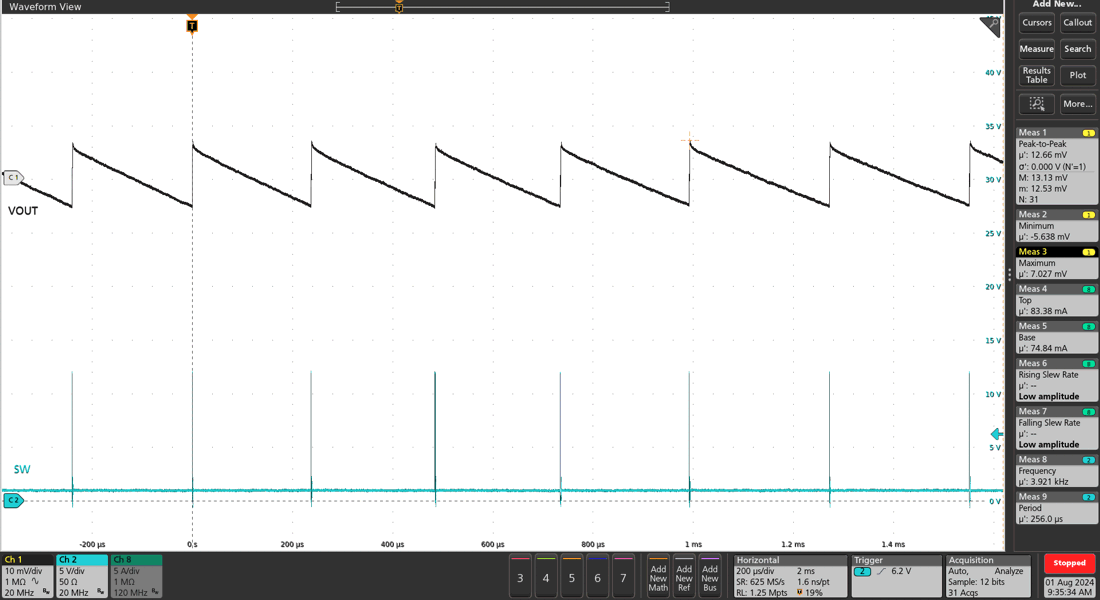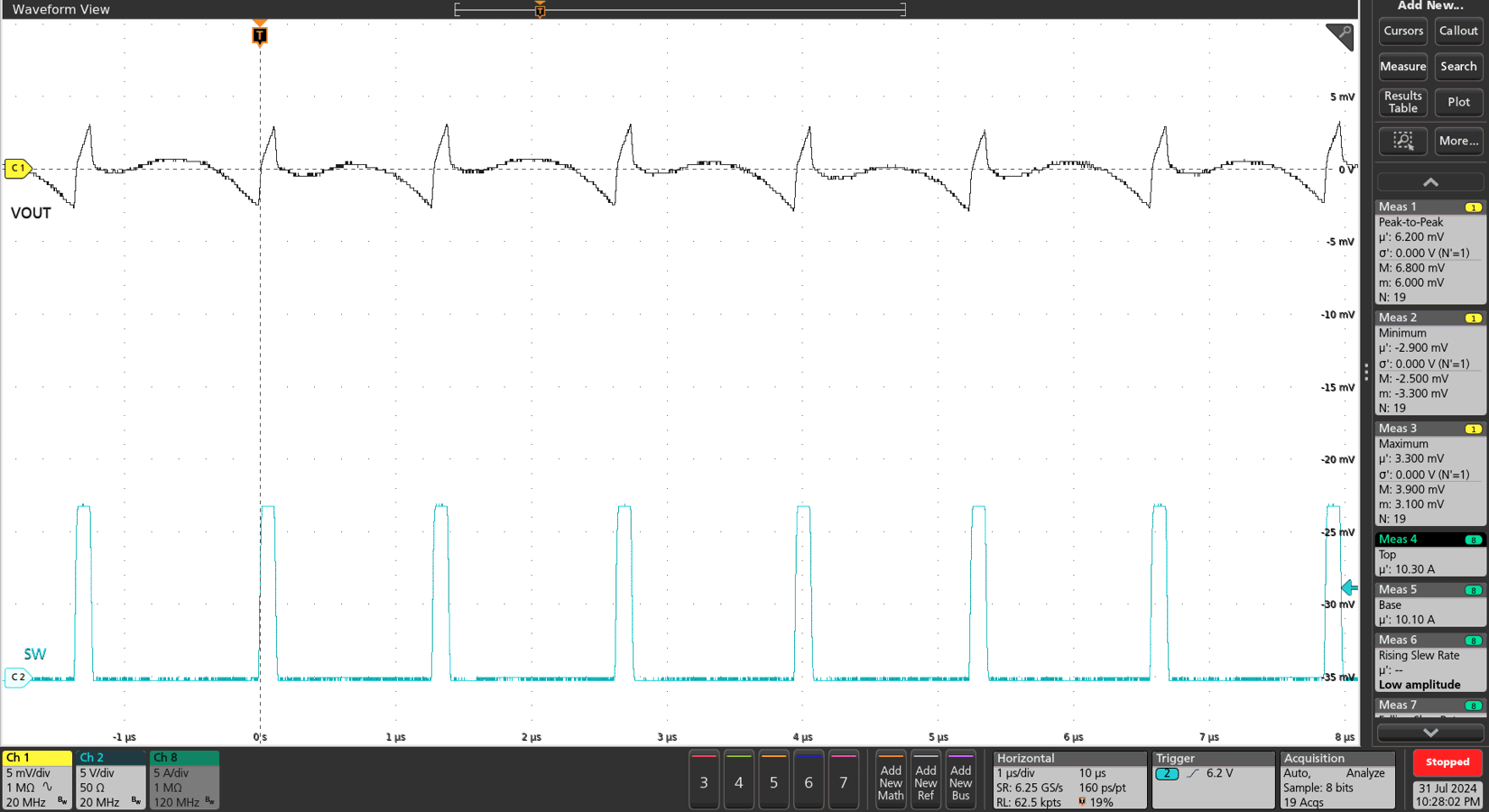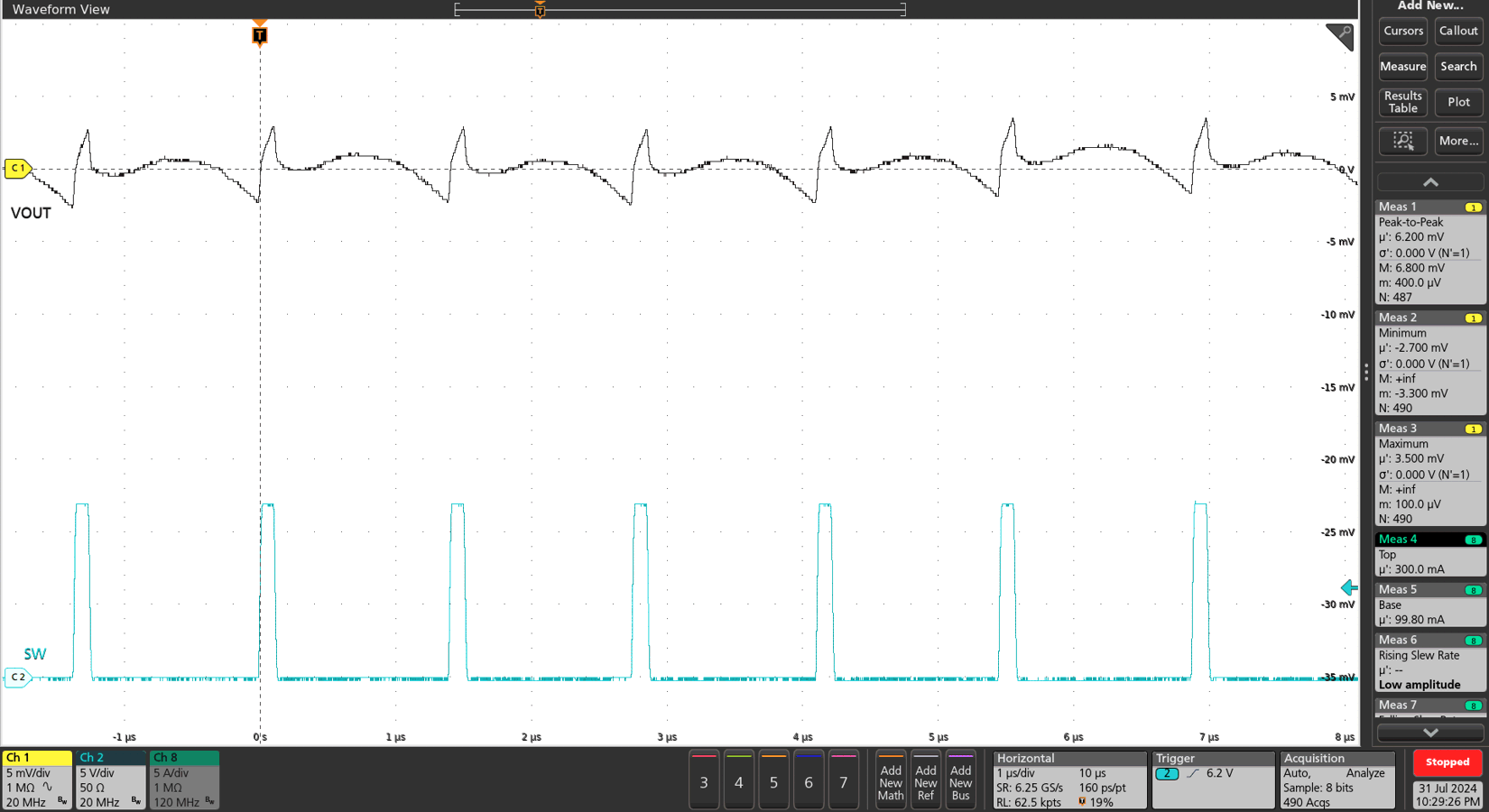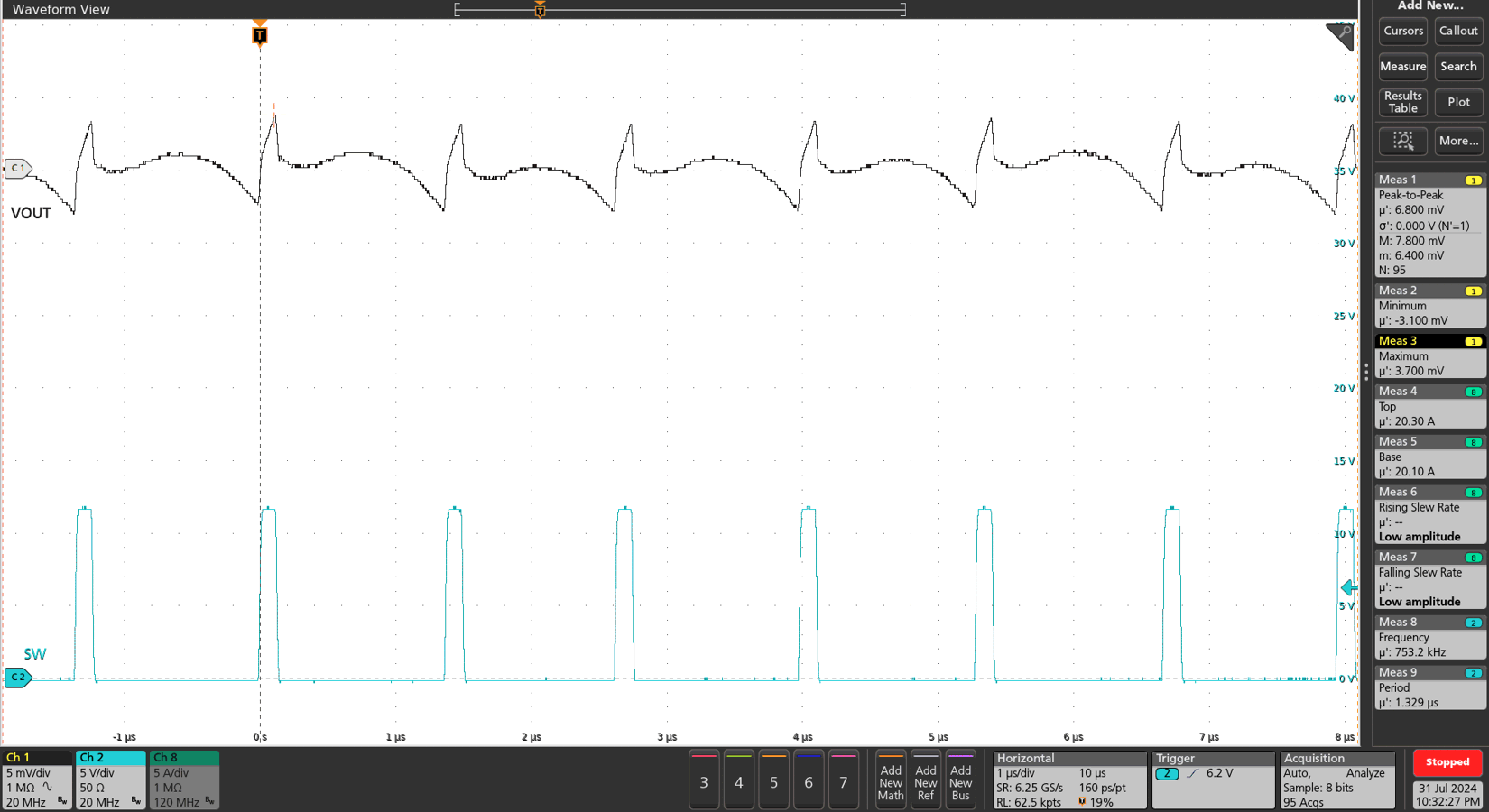SLVUCX1 September 2024 TPS548B23
3.1.5 Output Voltage Ripple
The TPS548B23EVM output voltage ripple is shown in Figure 3-7 through Figure 3-10. The load currents are 10mA, 10A, and 20A. VIN = 12V. The VOUT voltage is measured using TP10.
 Figure 3-7 Output Ripple –
10mA Load, PFM Mode
Figure 3-7 Output Ripple –
10mA Load, PFM Mode Figure 3-9 Output Ripple –
10A Load
Figure 3-9 Output Ripple –
10A Load Figure 3-8 Output Ripple – 10mA Load, FCCM
Mode
Figure 3-8 Output Ripple – 10mA Load, FCCM
Mode Figure 3-10 Output Ripple – 20A Load
Figure 3-10 Output Ripple – 20A Load